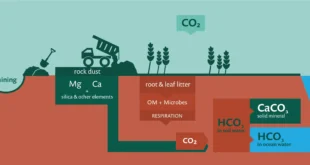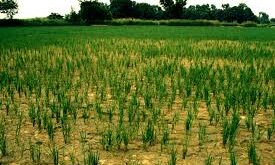- The Ministry of Water Resources recently made public a report that gives a snapshot of India’s groundwater situation. On the surface, there is good news: the total annual groundwater recharge — defined as the groundwater stored — for the entire country is 437.60 billion cubic metres (bcm) out of which the quantity extracted was 239.16 bcm.
- A similar assessment in 2020 found that the annual groundwater recharge was 436 bcm and extraction 245 bcm. In 2017, recharge was 432 bcm and extraction 249 bcm.
- The 2022 assessment suggests that groundwater extraction is the lowest since 2004, when it was 231 bcm. A decrease in groundwater extraction may indicate better water management; however, the report — called the National Compilation on Dynamic Ground water Resources of India — itself says that the improvement is only “marginal” and may be explained by natural conditions and changes in methodology that the Central Ground Water Board and States, which conduct the survey, adopt.
- In fact, the number of groundwater blocks, or wells, used for estimation were more than those in previous years and it turns out that the percentage of blocks where groundwater was ‘critically’ low was around 14%, or roughly similar to that in previous years.
- Regions with the most blocks with critical groundwater levels are in Punjab, Haryana, Delhi and western Uttar Pradesh, where, despite replenishable systems, indiscriminate groundwater withdrawal has depressed the water table.
- Other endangered blocks are in Rajasthan and Gujarat, where due to an arid climate, groundwater recharge itself is limited, and finally, parts of Karnataka, Tamil Nadu, Telangana and Andhra Pradesh, where due to inherent characteristics of crystalline water-storing aquifers, groundwater availability is low.
- That much more needs to be done to conserve groundwater is a foregone conclusion. There is no central law governing the use of groundwater and various States have their own laws on regulating its extraction that are deployed in a perfunctory manner.
- A draft National Water Policy has recommended a shift in usage from water-guzzling crops and prioritising recycled over freshwater for industrial purposes.
- Water ought not to be considered a free, private resource but one whose costs must be measured and borne equitably.
- While water remains a politically contentious subject in India, the climate crisis should inspire consensus across the political spectrum on disincentivising wasteful consumption of this precious resource.
SOURCE: THE HINDU, THE ECONOMIC TIMES, PIB
 Chinmaya IAS Academy – Current Affairs Chinmaya IAS Academy – Current Affairs
Chinmaya IAS Academy – Current Affairs Chinmaya IAS Academy – Current Affairs



